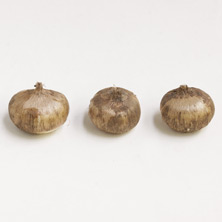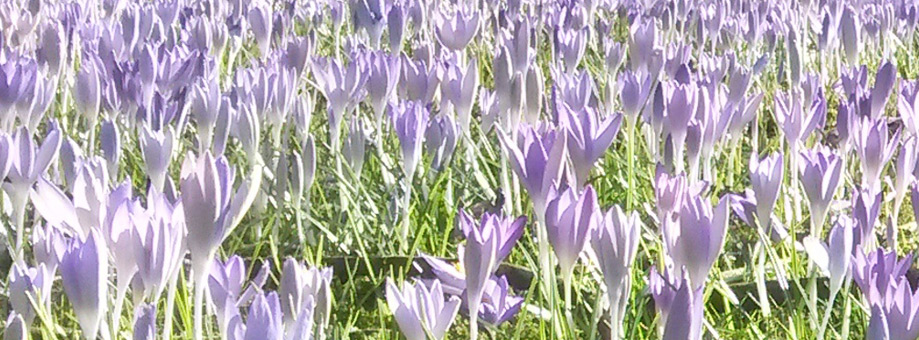- About Bulbs
- Landscaping Tips
- Planting & Care of Bulbs
- Tips for buying Bulbs & Perennials
- Planting & Growing Instructions
- Allium Planting and Growing Tips
- Astilbe Planting and Growing Tips
- Begonias Planting and Growing Tips
- Calla Lily Planting and Growing Tips
- Crocus Planting and Growing Tips
- Daffodil Planting and Growing Tips
- Dahlia Planting and Growing Tips
- Daylily Planting and Growing Tips
- Gladiolus Planting and Growing Tips
- Hosta Planting and Growing Tips
- Hyacinth Planting and Growing Tips
- Iris Planting and Growing Tips
- Lily Planting and Growing Tips
- Peony Planting and Growing Tips
- Rose Planting and Growing Tips
- Tulip Planting and Growing Tips

Crocus refers to a genus of several dozen species of small clump-forming perennials that have their origins in many different Zone 3 regions from southern Europe to China. They are most noted for being some of the very earliest spring flowers. Crocus have since been cultivated into a wide variety of hybrids, most developed in Holland.
Crocus bulbs should be placed three to six inches deep within the soil in large drifts anywhere you have sun to partial shade. A good rule of thumb is to plant crocus bulbs about three times as deep as the bulbs are tall—an inch-tall bulb should be planted three inches deep, for example.
Don't pile your crocus bulbs all together when planted, and be sure to leave a bit of room between each bulb. Check your specific species, but most crocus bulbs should be planted two to three inches apart.
Never plant crocus near summer annuals or other water-hungry summer blooms. As you give the annuals the water they need, you will be "drowning" the crocus and shortening their life. Excellent companion plants for crocus include flowering quince, forsythia, Asian jasmine, and witch hazel.
Crocuses, like all bulbs, can be susceptible to rot and mildew if placed in wet, non-draining conditions. Be sure to give your bulbs a good start by aerating your soil before planting, and making sure to set them in a location with great drainage. Don't plant crocus in places where puddles occur!
How to Plant Crocus Bulbs
Crocus are easy to grow! Plant your crocus in the fall, and choose a location with plenty of sunlight and lots of drainage. If you have heavy soil, or soil that's been compacted, aerate with a claw tool or trowel before getting started.Crocus bulbs should be placed three to six inches deep within the soil in large drifts anywhere you have sun to partial shade. A good rule of thumb is to plant crocus bulbs about three times as deep as the bulbs are tall—an inch-tall bulb should be planted three inches deep, for example.
Don't pile your crocus bulbs all together when planted, and be sure to leave a bit of room between each bulb. Check your specific species, but most crocus bulbs should be planted two to three inches apart.
Where to Plant Crocus Bulbs
Crocus are most impressive when planted en mass. Pick out a large sunny area in the garden, lawn, or a wild area (rocky spots are great). Plant large drifts using groupings of 20-30 bulbs spaced about 3-4" apart. Crocus are ideal for this kind of naturalizing, especially Breck's Giant Crocus bulbs for naturalizing. Many varieties will thrive and bloom for upwards of 20 years!Never plant crocus near summer annuals or other water-hungry summer blooms. As you give the annuals the water they need, you will be "drowning" the crocus and shortening their life. Excellent companion plants for crocus include flowering quince, forsythia, Asian jasmine, and witch hazel.
When Do Crocus Plants Bloom?
In the lawn, crocus have perfect timing. They will bloom well before grass starts to grow and by the time it reaches mowing height, the crocus are finished for the season. Established crocus clumps bloom earlier than first-year plantings, so avoid planning your garden colours around first-year bloom times.How to Care for Crocuses
Crocus require almost no care and are hardy in zones 4-8. If your crocus seem to perform poorly, the most likely reason is over-watering in the summer. Crocus prefer their soil damper in the spring and fall, but dry and warm during the summer.Pests & Diseases
Crocuses are very hardy, easy to grow bulbs, partly because they're incredibly resistant to pests and disease. These bulbs are not as tender as other spring-blooming bulbs, so they'll be a last choice for rabbits, voles, and squirrels. However, hungry animals will graze. If you live in an area with lots of wildlife, take steps to discourage digging by layering your bulbs under protective mesh or using a commercial animal repellant.Crocuses, like all bulbs, can be susceptible to rot and mildew if placed in wet, non-draining conditions. Be sure to give your bulbs a good start by aerating your soil before planting, and making sure to set them in a location with great drainage. Don't plant crocus in places where puddles occur!
Planting Video for Crocus










